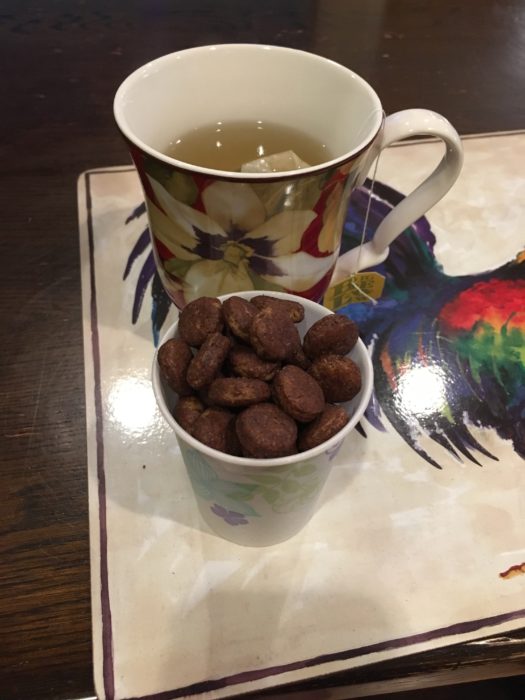In the age of the Internet, there are a million pieces of information you can read, especially related to health. Anyone on the Internet can write just about anything, so how do you know if the information is legitimate?
Today, we’re going to discuss how to tell if an health article has information that you can trust.
- Look at the author. Is he/she an educated professional? Is he/she an RD, PhD, MD? What else has this author written? Look for credible authors who have a strong background in what they are writing about.
- Where is the article? Is it a random blog? A trendy magazine? More credible sources are those that require more scrutiny in their research, such as WedMD, Mayo Clinic, or major news sources like the New York Times or Newsweek.
- Does the article cite science? If there is no scientific basis stated, it is likely there isn’t any. Anyone can come up with a theory and write about it on the Internet. Make sure there are some studies, or at minimum a scientific explanation. One person’s personal experience might be interesting, but that alone isn’t science and should be taken with a grain of salt.
- How valid is the study? Honestly, anyone with an idea can probably find some sort of study that supports it, but not all studies are equal. A small study on an extremely small group of people may have one result, but because the population of the study is so specific, it may not translate to all people at large. Ideally, multiple studies would support the idea, and the studies would be well controlled (no confounding variables) and on large groups of people. Randomized blind studies are generally good. Also, look at who is funding the study. Studies funded by Coca Cola interestingly show that sugar is “just an empty calorie,” versus non-soda industries that show sugar has other negative metabolic effects.
- Be wary of any diet recommendation that cuts out a food or a food group completely. With the exception of trans fat, there really is no food that can’t be part of a healthy diet. People are often looking for a quick fix, and cutting one item out completely often offers the promise of a quick fix. Which leads us to…
- Be wary of any diet recommendation (or food supplement) that promises rapid weight loss. There truly is no such thing as a quick fix. If a actually product causes you to lose 10 pounds in 10 day, that’s honestly kind of concerning. It’s not possible to lose fat that quickly, so you have to question where all that weight is coming from. It’s often water. Consistent nutrition is the best way to lose weight and keep it off.
- If you are looking at a general nutrition article, be suspicious of anything that promises weight loss as an effect. Let’s be honest: most of the United States wants to lose weight. It’s a MAJOR selling point, and a really easy way to manipulate people with marketing. For instance, if an article about gluten promises weight loss. Cutting out gluten is something that only matters if you have a sensitivity to it; it doesn’t cause excess fat. Or another example: I was looking at a test you order online that measures food sensitivity. It seemed interesting, but I clicked out as soon as I saw promises of weight loss. Those things are usually not that connected. Sure, if you have an intolerance, it could cause inflammation that could cause a little excess weight, but that claim made me question the credibility of the science in this particular test.
And since I’ve talked your ear off, let’s move onto food, shall we?
Pre-Workout:
I woke up hungry, so I had half a piece of banana bread before 7am Crossfit.
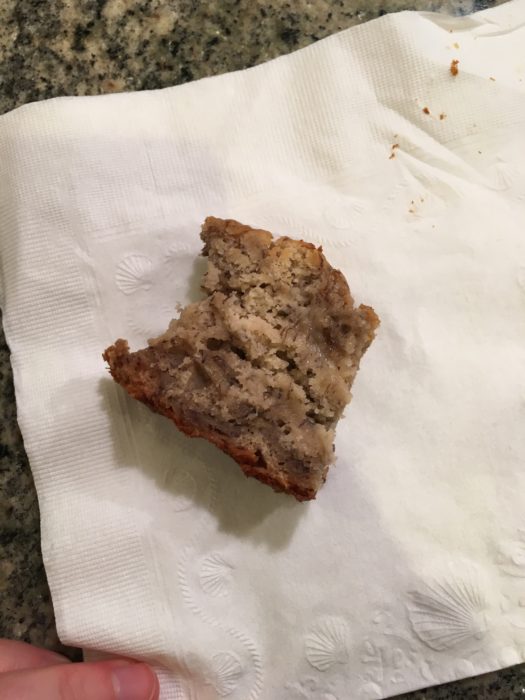
At Crossfit, it was a small class of 2. Strangely, the coach didn’t show up. The coach who led 6am had to leave, so he left me in charge! We did the workout as programed. We started out working on handstand holds against the wall. Mine actually felt pretty good, and I practicing the act of kicking up onto the wall (without actually doing it). I felt like I was maybe going to be able to kick up, but didn’t want to try it while unattended.
Then, we did a 10 minute AMRAP:
12 lateral burpees (over the bar)
9 clean and jerk (I used 85#)
6 kettlebell goblet squats
We both worked hard, and I finished just under 3 rounds.
Breakfast:
I had a throwback breakfast! I made a yogurt bowl with vanilla Greek yogurt, banana, and sunbutter. This is a throwback to my yogurt obsession in 2013.
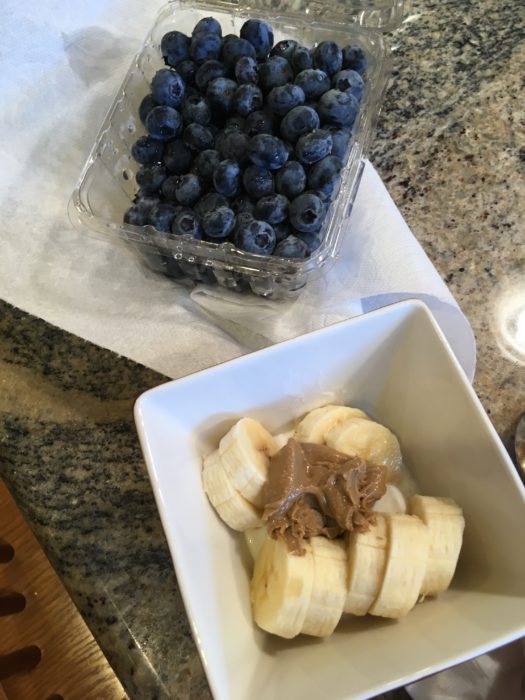
Later that morning, I took Chloe for a nice long walk while listening to a podcast. We thankfully avoided the rain, but there were quite a few puddles.


Lunch:
I made a salad with a drizzle of champagne vinaigrette, rotisserie chicken, hummus, and Tzatziki sauce. Crackers on the side.
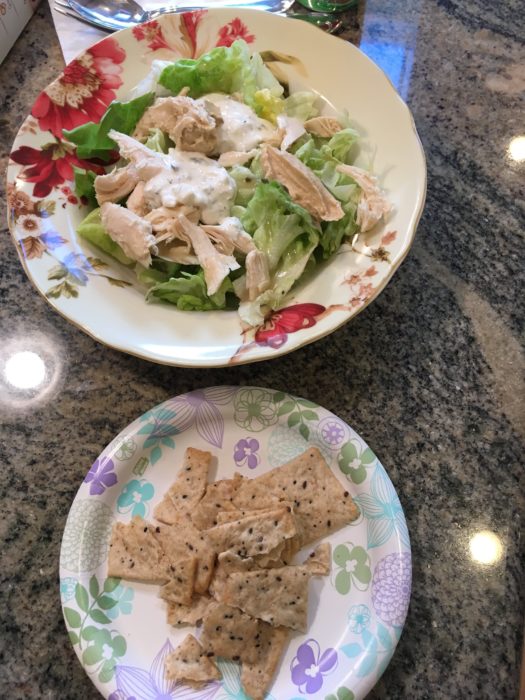
Snack:
One exciting event was getting an apple fritter! I’ve been wanting one for SO long, and when I won a free pastry in Safeway Monopoly, I had to make it happen. I split one three ways with my parents.
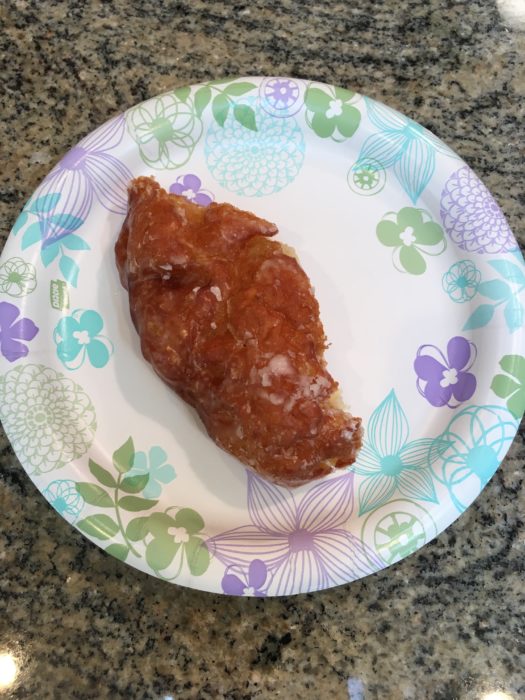
It was absolutely everything.
In terms of how I felt with gluten, I would say weird. No stomach flare, but there was some brain fog type of stuff going on. I again felt this weird (slight) disconnect between my brain and my hands, and I fell asleep within 20 minutes of eating it. I sort of felt intoxicated. Weird.
To try and lessen the effects I might get from it, I finished off my bag of Mochi crackers, and later had some egg whites with American cheese.
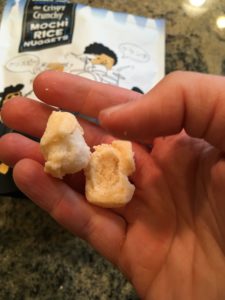
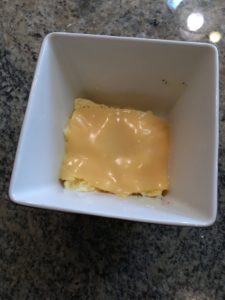
Dinner:
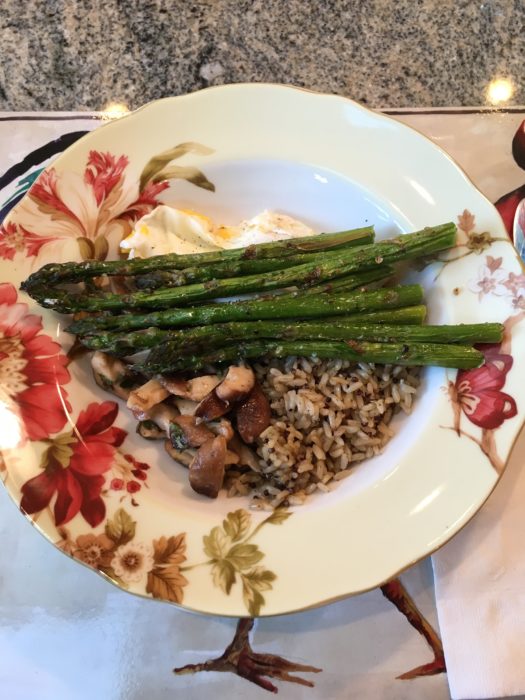
A delicious rice bowl that made use of our fresh CSA veggies. Mushrooms sautéed with garlic and thyme, brown rice, roasted asparagus, and an egg over easy.
Dessert:
Banana bread.

Night snack: Thin Mint cereal. Seriously, this stuff is so good.
